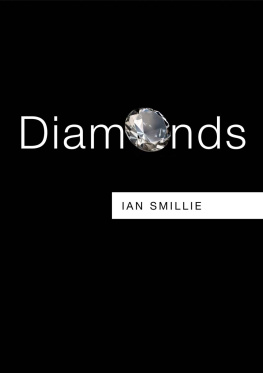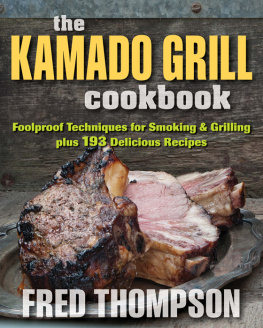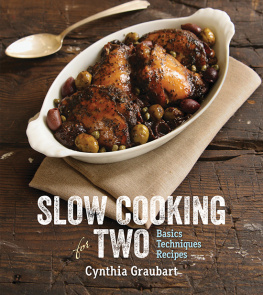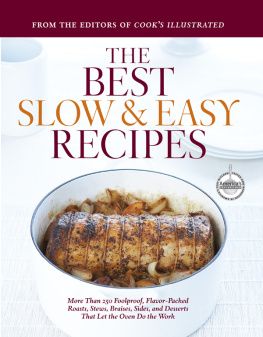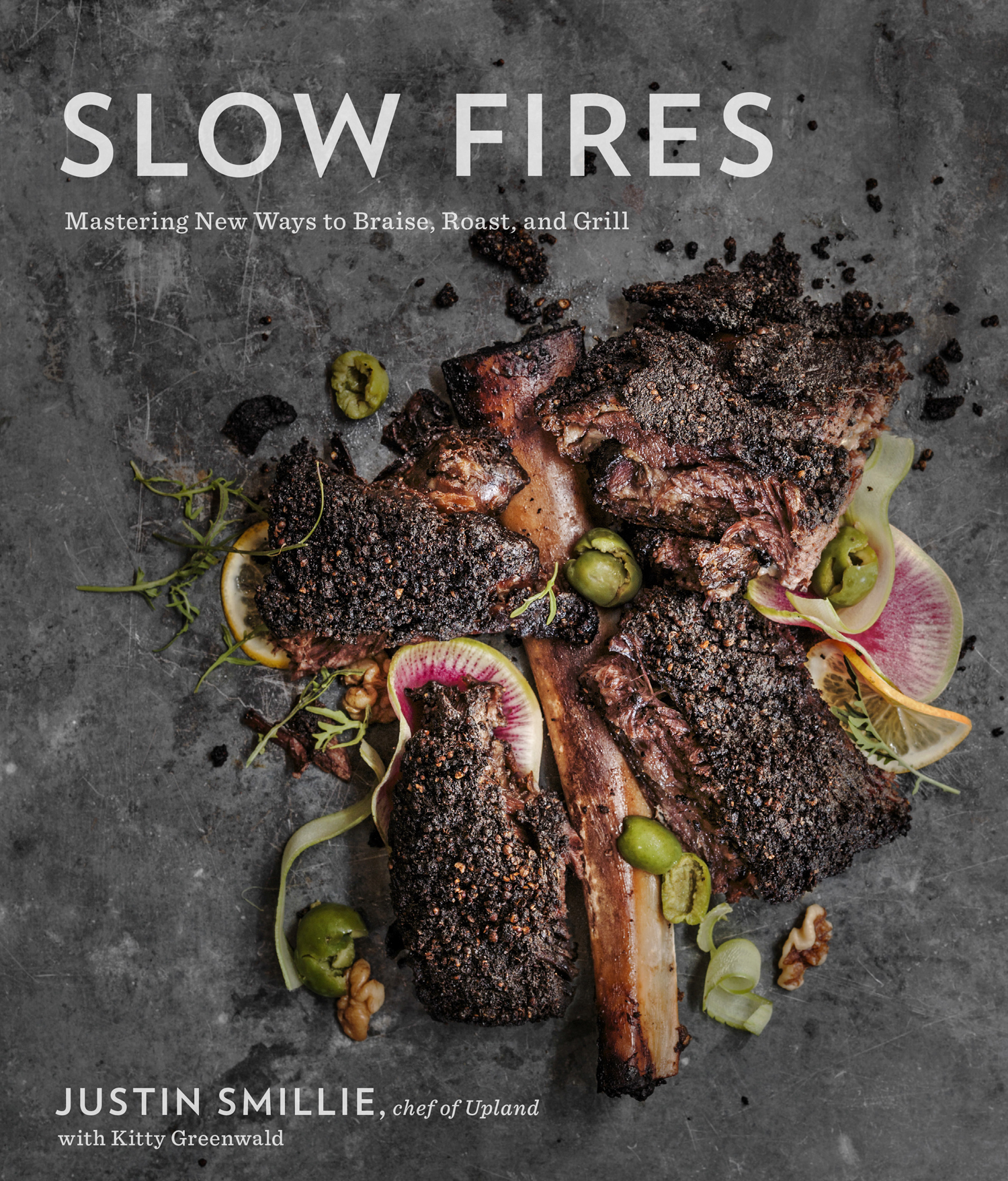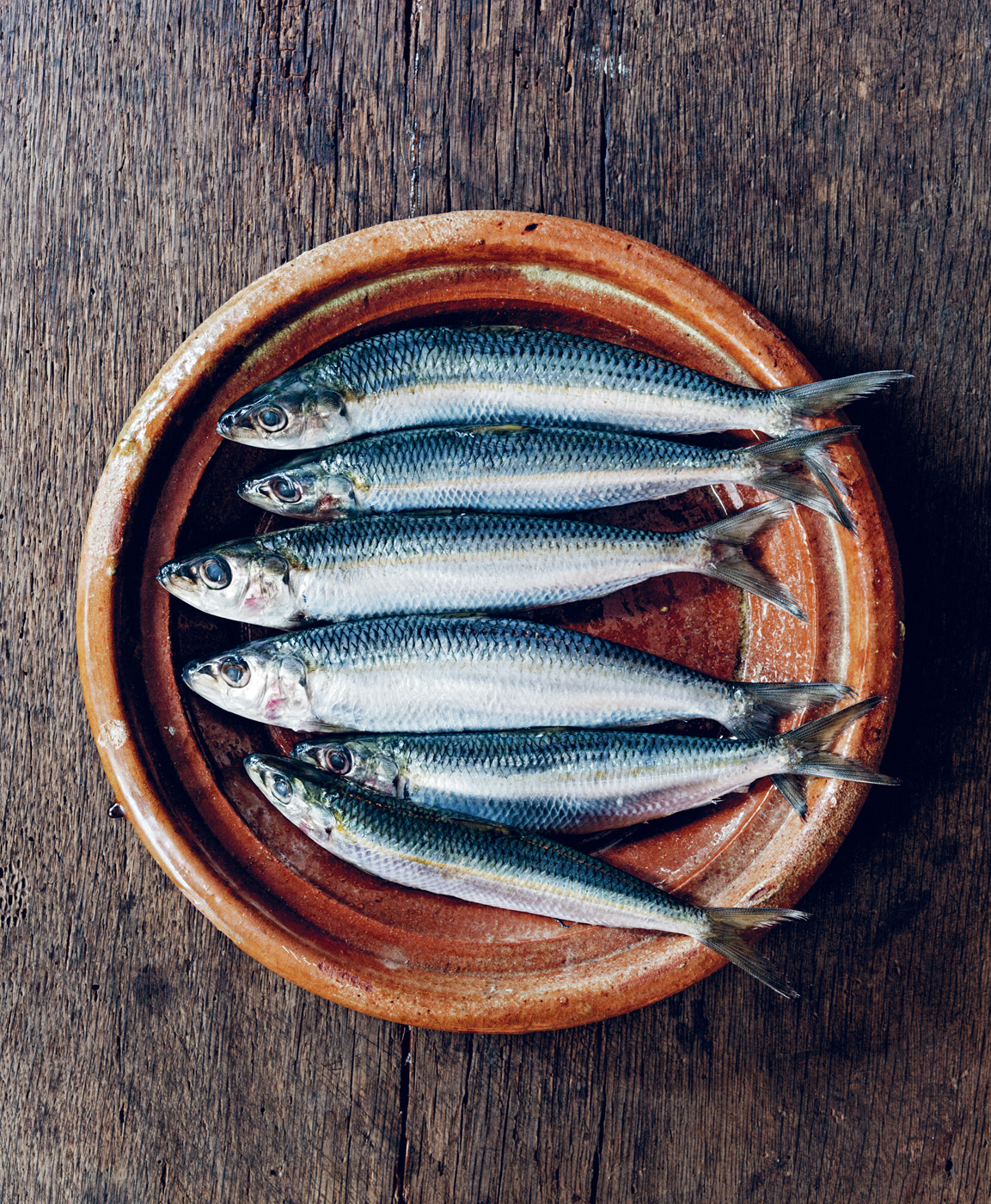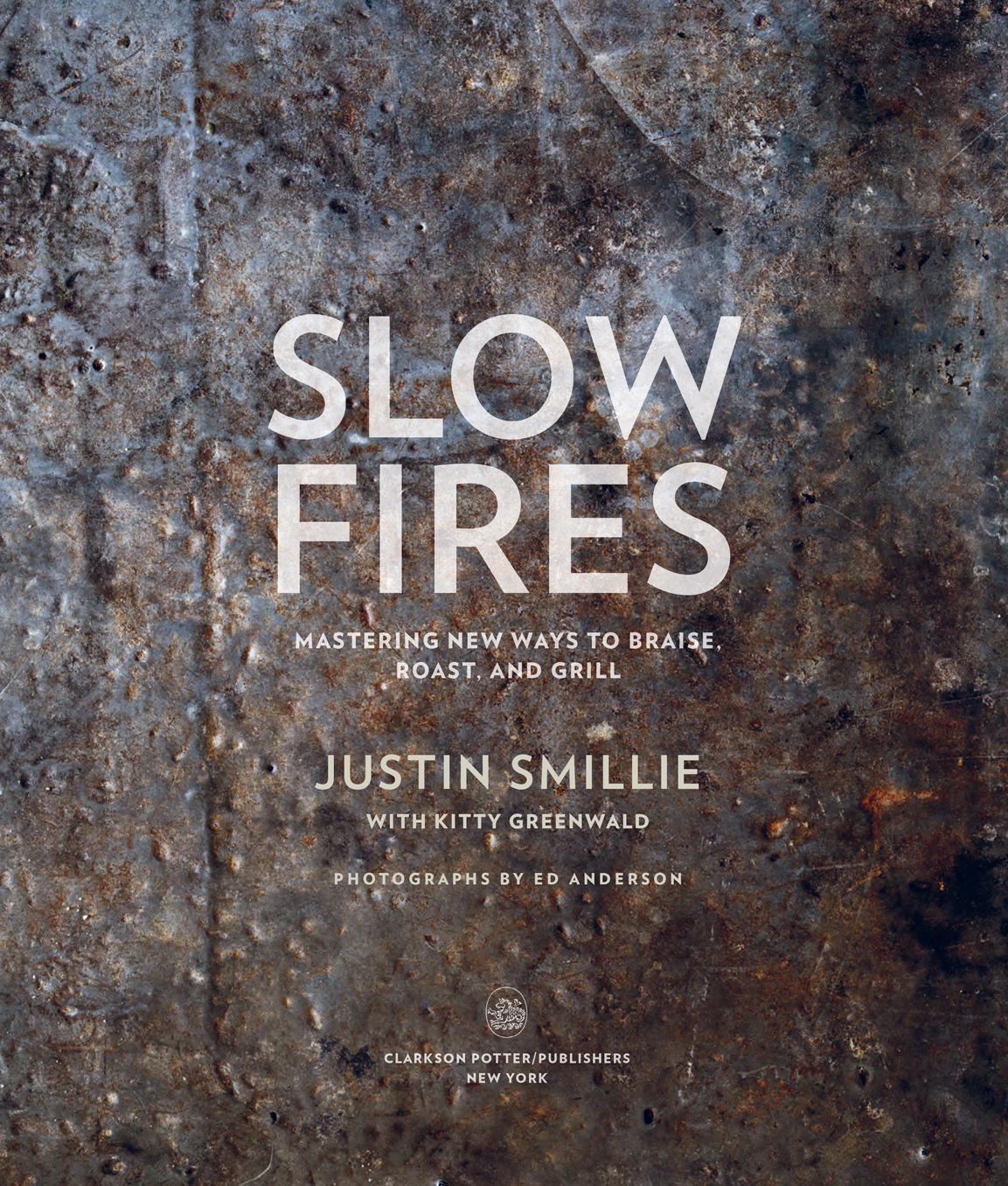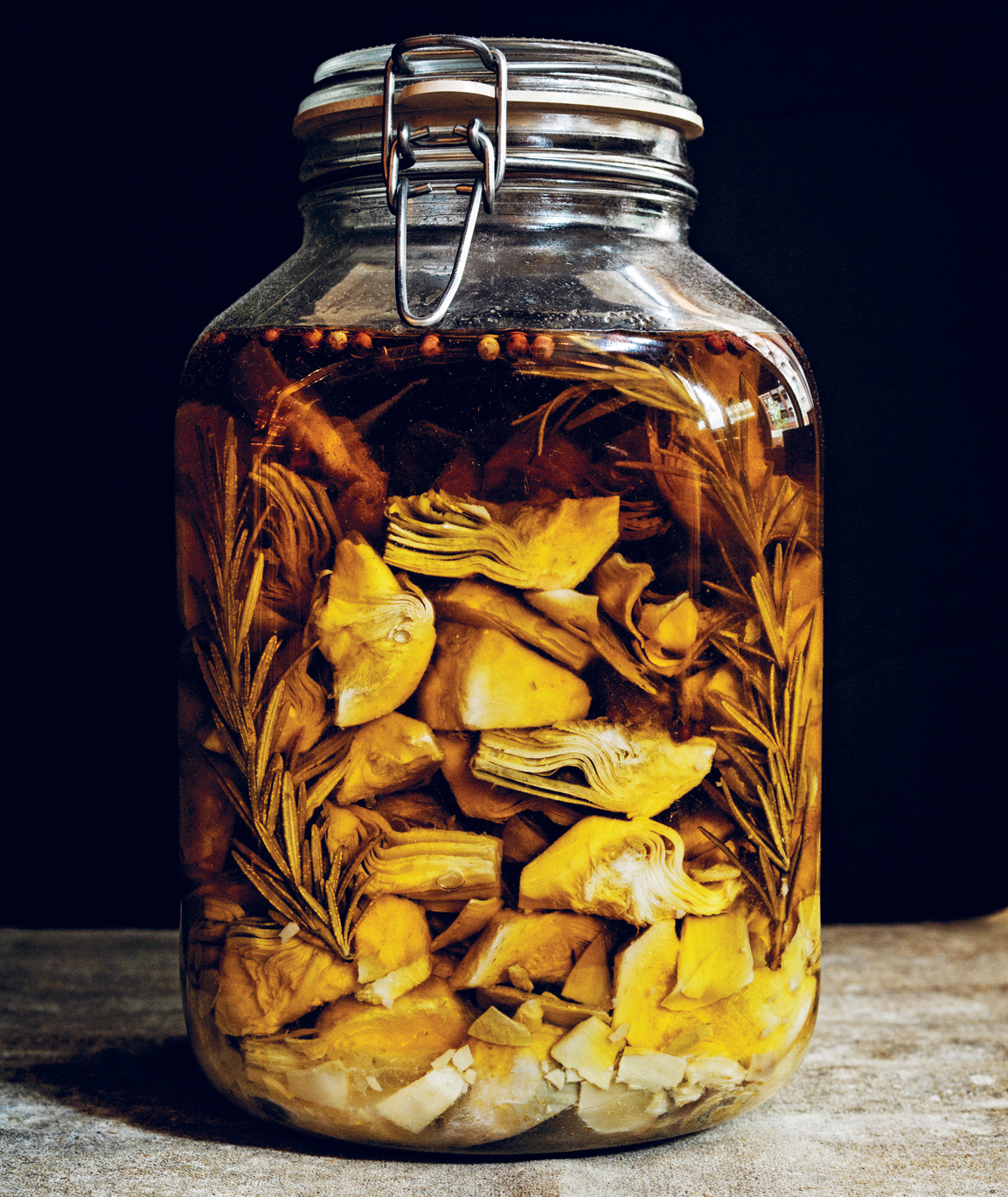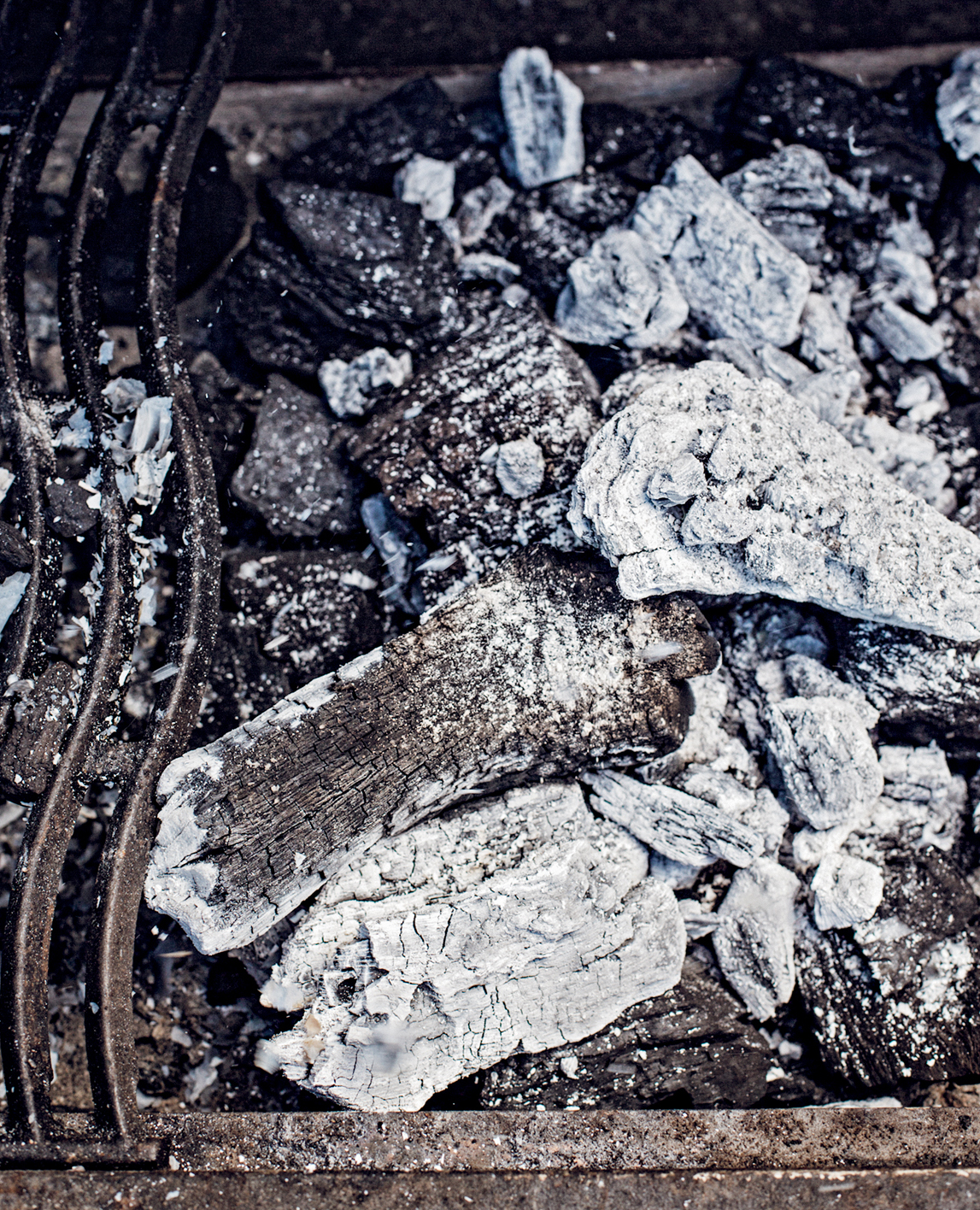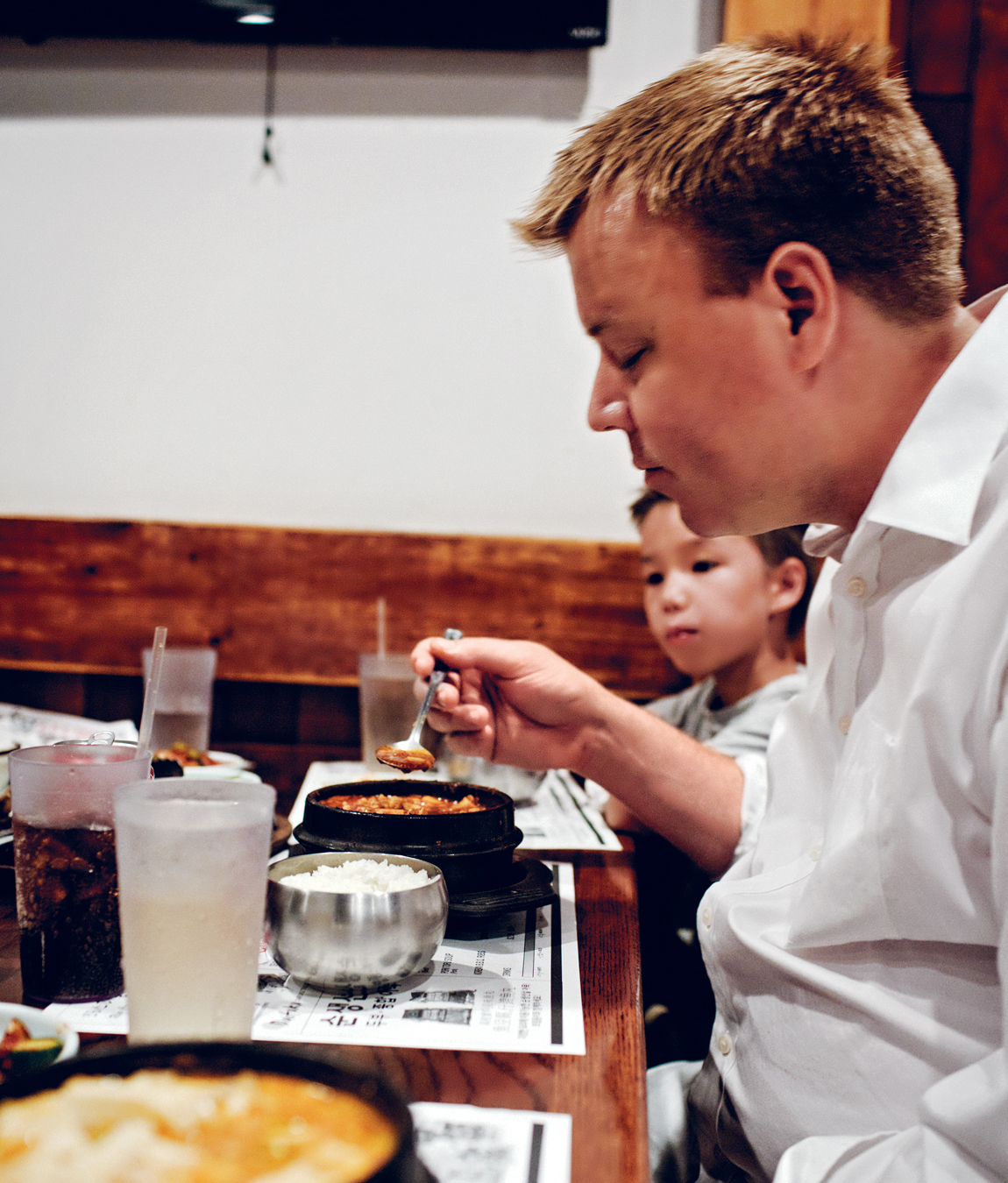All rights reserved.
Published in the United States by Clarkson Potter/Publishers, an imprint of the Crown Publishing Group, a division of Penguin Random House LLC, New York.
CLARKSON POTTER is a trademark and POTTER with colophon is a registered trademark of Penguin Random House LLC.
Smillie, Justin.
Slow fires : mastering new ways to braise, roast, and grill / Justin Smillie, Chef of Upland with Kitty Greenwald ; photographs by Ed Anderson. First Edition.
Includes index.
1. Roasting (Cooking) I. Greenwald, Kitty, 1978- II. Anderson, Ed (Photographer) III. Title.
This book is dedicated to my wife, Megumi. Without her unending support, I never could have become the cook I am today. And to my sons, Colin and Oliver, who waited for playtime so patiently. You all are my beginning and my end. I look forward to our adventures and all the meals yet to be shared.
for beauty. Com saudades.
INTRODUCTION
When Im standing over a cutting board with a stockpot sputtering behind me, a roast in the oven, shallots mellowing in vinegar off to the side, Im in my element. Whether Im at home or at my restaurant, Upland, in New York City, Im a chef who loves to cook. While that seems like an obvious thing to say, what I mean is that I love putting my hands on my food, feeling the salt between my fingers and knowing how those crystals will transform the ingredients before me. Its seeing how their colors change as they sear, noticing how the aromas have developed when I walk by the oven an hour later, feeling how the heat of the grill softens as the coals crackle and ash over, whiter and whiter.
Cooking is all about using your senses. Its about understanding transformations and its about understanding heathow it works and mutates, from the wet to the dry; from a rolling boil to a gentle simmer; from a crust-forming roast to a smothering steam bath in the oven; from the hard, charring sear of the grill to a low, soft smoke.
Coming up as a young cook, I learned a lot from my colleagues, chefs, and mentors. Often, they would insist their way with a particular step would be the right way: You only sear on high heat, you never salt meat except just before you cook it. But as I grew, from my first kitchen job as a crab boil cook, to a brief stint at culinary school, to some of the finest kitchens in New York CityMercer Kitchen, Washington Park, Barbuto, il Buco Alimentari e VineriaI developed an Italianesque style that is both rustic and detailed, one that follows the rulesuntil its time to break them.
Take, for example, the dish that has become my signature: a beef short rib coated in peppercorns. Ill say more about it in the , but Im guessing its developed a following in part because of its springy, juicy bite and crisp exterior, a result I was only able to achieve by steam-roasting the ribs before setting the crust in a hot pan. That is, by ignoring the standard process of flash-searing meat and then finishing it in the oven, and imagining a better way.
A lot of love goes into those ribsinto all of my dishesand this book is about developing an understanding of the traditional methods of braising, roasting, and grillingand then expanding on them. Curiosity, deference to tradition, and a little bit of a rebellious streak made me an intuitive, confident cook, and thats how I want to help my cooksand readersthink for themselves. Like all restaurants, Upland is always evolving, but the basic principles found in this collection of recipes inform what we do there.
This cookbook is dedicated to delicious eating, slowly built flavor, and balanced dishes. The recipes are generous, easily shared, and taste best in good company. My hope is that you derive as much pleasure from eating them as you do from cooking them, as there is so much enjoyment to be found in both.
MEALS TO MASTER BRAISING, ROASTING, AND GRILLING
The recipes that make up this cookbook are grouped into fifty-two meals. They are meals you plan for, anticipate, and, for the most part, tuck into on a weekend, when you have the luxury of time. When you can lose yourself in the small steps that mark a dishs evolution: the olive pitting, the spice toasting, the salt rubbing. Thats why these recipes are thorough and packed with sensory cues. Responding to the smells, sights, and textures of a dish is how I learned to cook, and thats what excites me.
Taken together, this years worth of feasting also teaches you about the different techniques and approaches that make up the majority of my repertoire. Theres a methodology for how a braise is built, how a roast is seasoned, and even how a grill is lit, and, to make exceptional meals, you should understand these principles.
We begin with the because it is a more forgiving techniquetheres no rapidly closing window to hit a perfect medium rarethat is delightfully broad and expansive. Then we move on to roasting, which involves mostly dry cooking in the oven or on the stovetop. Finally, we end by grilling over a live fire, which is the driest and most rustic approach.
Each chapter starts with a detailed explanation of the basic technique, then delves deeper into the minutiae, breaking rules and exploring ways to get at a broad range of results. The recipes in each chapter start as by-the-book as possible, and then evolve to alter or build on what comes before.
But, of course, dabble in the fifty-two meals as you like, in the order youd like, or make just a main dish from one meal and pair it with a salad or a sauce from another. These recipes are meant to stand alone and function as part of a larger spread, and the most important sensibility is your own.
PLANNING THE MEALS
There is no getting around the fact that many of these meals take more time than the average because they taste far better than the average. (To be fair, more than a handful of them can be made on a weeknight.) Though I realize time is a luxury, building big flavor often depends on it.



